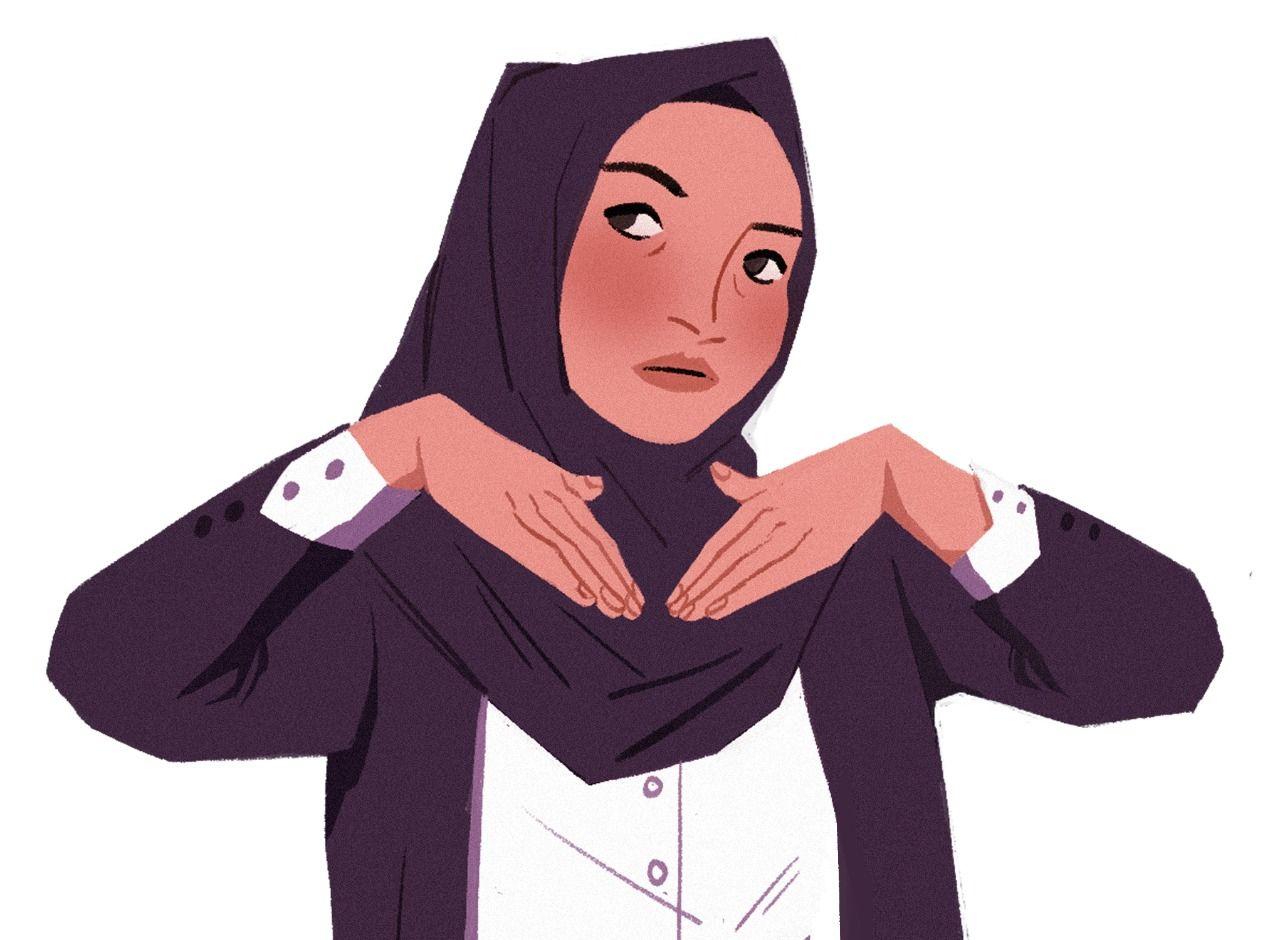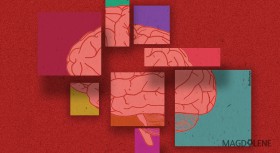In a hospital ward in Jakarta, “Lisa” strained to hold the pain, gripping her stomach tightly. The pain that she has been suffering since the age of 12, has been increasing in intensity and even forced her hospitalization for one week. When her menstruation period comes, the pain heightens. Her bleeding was also excessive. As a result, she has had to halt all activities. She has to skip courses and also delay her dream of becoming a product designer.
Wanting to know more about her medical condition, she made an appointment to see an internist and underwent blood tests, a CT scan as well as an MRI. But strangely enough, her doctor still failed to find an abnormality that could explain her stomach pain.
“Your pain may only be in your head,” the doctor then said, giving her a prescription for a pain killer as a remedy. Lisa could only remain silent and be saddened when she heard the doctor’s conclusion.
“For me, there must be a reason for all this pain. I was told that (it was only imaginary), I felt desperate and thought whether I was indeed just overreacting or was I really sick?” said the 26-year-old.
A year later, towards the end of 2018, Lisa had to be hospitalized again. But this time, she was handled by a different internist who advised her to take a colonoscopy to see the inside of her intestine. The doctor then diagnosed her with an intestinal infection and advised her to check her condition with an obstetrician-gynecologist.
In 2019, Lisa received another diagnosis – endometriosis– an endometrial tissue that grew outside of her uterus, such as in her fallopian tube or even in her intestine, and adenomyosis, an endometrial tissue existing within and growing into the uterine wall. This was why during menstruation the pain became acute and caused excessive bleeding during and beyond her menstrual cycle.
Although she had received the correct diagnosis, Lisa felt uncomfortable when her doctor suggested that she got married and had children in order to lessen the pain arising from these two conditions. Lisa then went to see another obstetrician-gynecologist who managed to make her feel more comfortable during her examination. This doctor prescribed a hormonal therapy that she has been undergoing until today.
“I always respect medical diagnosis and it is true that a correct diagnosis often comes after a long process. Still, I do wish that medical workers could be more patient in addressing their patients’ complaints and never invalidate their pain,” Lisa said.
Also read: Thyroid Survivors Suffer Quietly Amidst Misperception
The Gender Bias, Omitted in Diagnosis
Endometriosis and adenomyosis are conditions that are hard to diagnose. The Endometriosis Misdiagnosis Report by Endometrix, a digital application institution that notes endometriosis symptoms said that about four to eleven years are needed for someone to be diagnosed with Endometriosis from the time the symptoms were first noticed.
The report attributed the difficulties to the need for detailed and deep examinations because endometriosis often gets misdiagnosed as another condition. Also, the accompanying dysmenorrhea or excessive menstrual pain is often misdiagnosed as a mere common menstrual pain. The same went for adenomyosis and both condition can often be misdiagnosed.
Women’s complaints linked to the chronic pain they experienced often tend to be ignored as is mentioned in a research, entitled Brave Men and Emotional Women (2018) by Anke Samulowitz and company from the University of Gothenburg and the Chalmers University of Technology in Sweden.
According to the research, women who complained of pain were often seen as just overreacting or even faking the pain, or that the pain only was an imagination in their mind, as was in the case of Lisa.
Sandra Suryadana, initiator of the organization Doctors without Stigma, said that when complaints of pain are ignored because it is believed to be common menstrual pain or a hormonal factor, there is a potential for a misdiagnosis. At a larger scale, this could become fatal and lead to death.
“Women who experience heart burns, for example, may actually be experiencing an underlying symptoms of stroke, but often they are diagnosed as having a gastric, or even psychological problems. This kind of misdiagnosis that make light of what could be a serious medical condition is very dangerous,” Suryadana told Magdalene.
A misdiagnosis is what “Tia”, a university student in Bandung experienced. Around 2017, the 19-year-old felt that her vagina was hurting, itching and painful when urinating or masturbating. Whenever she suffered from white discharge, it was accompanied by a very strong acidic smell. These discomforts prompted her to visit an obstetrician-gynecologist and led to her being diagnosed as suffering from a cyst.
“I always respect medical diagnosis and it is true that a correct diagnosis often comes after a long process. Still, I do wish that medical workers could be more patient in addressing their patients’ complaints and never invalidate their pain,” Lisa said.
“I was advised to take a surgery, but I already felt hurt because I was scolded for having masturbated. So, I thought I better sought another opinion from another doctor and besides, I just had a surgery for an appendicitis and scoliosis,” she told Magdalene.
She then went to another hospital and was handled by doctor specializing in dermatology and genital diseases and was diagnosed as having an infection of the urinary track due to unclean water. She was given oral tablets and her symptoms disappeared just a few days later.
Responding to the issue of misdiagnosis in women “Melinda”, a general practitioner from Makassar who asked to remain anonymous, said that even though someone felt the diagnosis of their doctor were not right, they could not immediately label it as a misdiagnosis.
“Maybe the more appropriate term is underdiagnosed, and besides that there are ethics that prevent from saying that the previous doctor may have made a wrong diagnosis. This code of ethics regulates how we interact with patients and actually we are not allowed to differentiate between male and female patients,” Melinda said.
Also read: It Is Ok to Vent About Coronavirus Sometimes
Research Results are yet Inconclusive
Historically, gender bias in the medical sector can be traced back to phenomenon of hysteria or female hysteria – from the Greek word for uterus. This medical diagnosis is particularly given to women who were deemed to behave beyond the norms or were maniacs. Even though hysteria is no longer relevant and has been proven to be a manifestation of sexism in the health sector, it showed that the medical field is still rife with biases towards women.
Suryadana said that gender bias in the medical field was influenced by the patriarchal culture that had become internalized. Even though the medical world strives to be objective and science oriented, in practice it is still affected by cultural, religious and gender norms. One such concrete example of bias can be seen in patients of gynecologists.
Sandra Suryadana, initiator of the organization Doctors without Stigma, said that when complaints of pain are ignored because it is believed to be common menstrual pain or a hormonal factor, there is a potential for a misdiagnosis. At a larger scale, this could become fatal and lead to death.
In her observations, women tended not to have a say and must follow their husband’s decision when it comes to giving birth or aborting a fetus. Medical workers also do not give time for couples to discuss the matter and would directly ask the husband to make a decision, Angelika Rizky, a young physician studying for specialization in ob-gyn, told Magdalene. Another example is how the process of “husband stitch” or the post-natal vagina suture that follows a birth process is often decided without the consent of the woman.
“To me, it is important to know what the mother feels first before a decision is made by the husband because she is the one who would feel the consequences, not the husband,” she said.
Gender bias was also reflected in medical research. Suryadana said that in research, it was very important to get detailed data from the respondents, such as the number of male and female participants, up to their economic status, because it could affect the results of the research. Research that is unable to explain much about these categories would also have difficulties reaching an inclusive result.
“Many COVID-19-related studies, for example, did not include women as respondents and were too late in realizing that the vaccine actually has an impact on menstrual cycles. Only after this began to surface the further research was conducted, consuming much energy and funds,” said Sandra.
CNBC Indonesia, in November last year said that there were around 30,000 women in England that reported the effect of vaccines on their menstrual cycles to the Medicines and Healthcare products Regulatory Agency (MHRA) while in the United States, 140,000 women also reported the same thing.
This change in menstrual cycle was also experienced by Tia, a university student in Bandung who had received her first vaccine on September 10, last year. Before getting vaccinated Tia had not yet had her period that month. But after the vaccinations she failed to have her period for that month, although she still experienced menstrual pain.
“I am never late in my menstruation and after the vaccination I waited from the middle to end of the month but there was none. Up until the summons for the second dose of vaccine in October at the same date, I had not yet menstruated,” Tia told Magdalene.
When undergoing her medical checkup for her second vaccination, her complaint was not deemed to have been the effect of the vaccine because no one else had also reported a change in their menstrual cycle.
But Tia was denied her second vaccine shot and was advised to see the doctor on duty who only speculated that Tia was experiencing a hormonal fluctuation or was pregnant.
“I am not blaming the vaccine and about two days after the scheduled second dose I finally menstruated again. But the cycle had become irregular and shorter. I once had my period for four days, something that usually is not like that,” said Tia.
A research on the Association Between Menstrual Cycle Length and Coronavirus Disease 2019 (COVID-19) Vaccination conducted by Alison Edelman and company from the Oregon Health & Science University, found that a number of women who had received COVID-19 vaccines had experienced some small changes, like a day shorter menstrual cycle. But that also depended on their vaccination status, whether they had received one or two doses.
Those who had received two doses saw their menstrual cycles extended by an average of two days. But two cycles after the last vaccination, the cycle would return to normal again.
Suryadana said, “Researches that are gender biased will blur women’s experience and will affect the studies in the future that will use them as references.”
Gender Perspective in the Medical Sector
Data from the World Health Organization (WHO) showed that globally 67 percent of medical workers were women. However, there was a difference in the health professions of men and women with the majority of the women as general practitioners, nurses and midwives. The health ministry showed a similar conclusion saying that in 2019, from the 1,244,162 medical workers, 70 percent were women holding the same professions.
Although dominated by women, the sector did not see the same proportion of women in leadership positions or those who continued their education to get a specialization, The ministry said only 12,324 women went on to get a specialization while the figure for men was at 17,268.
“Nayla” a magister student at the department of epidemiology of Universitas Hasanuddin said that women tended not to continue their education to higher level to get a specialization because of the existing stigma that a number of fields such as anesthetics, orthopedics and urology were the domain of men.
Other consideration such as women having to care for their family also came into play when women wanted to continue their education.
Because of these, women could not spend too long a time at hospitals even though they were qualified in terms of ability and competency.
“Looking at the residents, women who take up anesthetics are only a few, and so it is in surgery. So, there are a lower participation in several department which had heavier mental and physical workloads,” she told Magdalene.
Nayla said that when there was a low participation in specializations that were seen as masculine, there would be a gap as there were female patients who were more comfortable being examined by a female doctor.
“There are patients who prefer female doctors, maybe because of personal preference or religious reasons, and they would opt not to see a doctor or get themselves examined by a doctor because that type of position was unavailable,” she said.
Suryadana said, “Researches that are gender biased will blur women’s experience and will affect the studies in the future that will use them as references.”
Angelika echoed her, saying that she believed female doctors or residents must work to eradicate the bias that women cannot further their education and that certain departments were reserved for men. Also, some doctors still see certain tasks like applying surgical sutures or stitches, could not be done by women because it is classified as heavy work.
“Where I took my medical education, there were many people who invited my female friends to join the orthopedic department because it should not only for men,” she said.
Angelika added that trainings and courses on gender sensitivity were also needed so that no judgement based on the personal bias of doctors were made when examining patients. She said that besides the issue of violence against women, an emphasis on the importance of gender inclusivity was also missing in medical education.
In relations to this, feminists have been encouraging that the theory of feminism be included in medical education. Malika Sharma, an academic from the University of Toronto, said that feminist lens could be used to put some order into the existing gap in medical examination, salary, leadership positions among medical workers and in regulations against sexual violence for both patients and doctors.
Suryadana, meanwhile, said that educational institutions could develop independent curriculum or provide additional classes on gender perspective and sensitivity. Or, even if there are no classes being offered, they could at least learn from other feminist sources.
“A just gender perspective is needed to serve patients or conduct a research with a perspective that take into account women or gender minorities,” Suryadana said.
This journalistic project is supported by Meedan, a non-profit organization in the field of technology with the vision of strengthening digital literacy and global journalism
This is the English version of the original article.



.png)

-thumb.png)


Comments